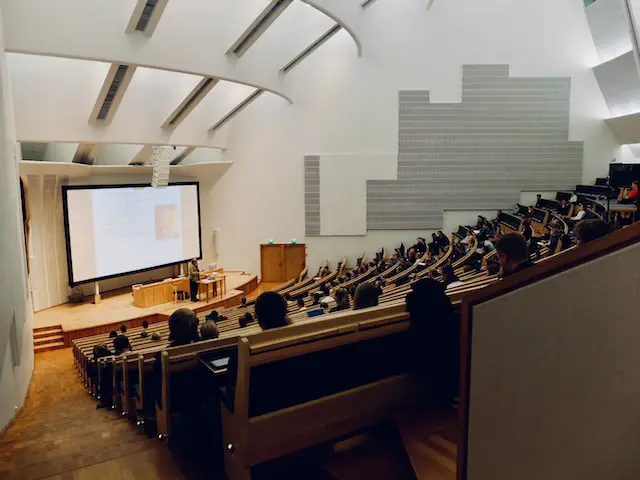Introduction
The Ivy League is a group of eight academic institutions in the United States widely considered to be among the mostly recognized colleges worldwide. While the Ivy League schools share many similarities, one key difference is their academic focus. Some ivies offer liberal arts programs but the others do not. Major ivies including such programs are Dartmouth and Brown. Let us see are Ivy League schools liberal arts in this article.

Are Ivy League Schools Liberal Arts?
While some of the Ivy League schools have strong liberal arts programs, not all of them are exclusively liberal arts institutions. A liberal arts education is generally defined as a broad-based education that emphasizes critical thinking, communication skills, and a broad understanding of the human experience. Three ivy league colleges are focussed exclusively on liberal arts.
Are Any Ivies Liberal Arts?
Liberal arts curricula typically include courses in the humanities, social sciences, and natural sciences, and aim to produce well-rounded graduates who are capable of adapting to a rapidly changing world.
Of the eight Ivy League schools, three are considered to be primarily liberal arts colleges: Dartmouth College, Brown University, and Columbia University. These schools have a strong ground on graduate and undergraduate programs with lots of majors in the humanities, social sciences, and natural sciences.
Colleges Exclusively for Liberal Arts
Dartmouth College: located in Hanover, New Hampshire, is known for its strong undergraduate program in the liberal arts. The college offers more than 50 majors, ranging from anthropology to computer science, and places a strong emphasis on undergraduate research and experiential learning opportunities. Dartmouth’s liberal arts curriculum is designed to produce graduates who are capable of critical thinking, effective communication, and creative problem-solving.
Brown University: located in Providence, Rhode Island, is another Ivy League school with a strong liberal arts focus. Brown’s Open Curriculum allows students to design their own course of study, with few general education requirements and a wide range of elective courses available in all areas of study. Brown’s liberal arts curriculum is designed to produce graduates who are well-rounded, intellectually curious, and capable of adapting to a rapidly changing world.
Columbia University: located in New York City, is primarily known for its strong graduate programs in business, law, and journalism. However, the university also has a strong undergraduate program in the liberal arts, with a wide range of majors available in the humanities, social sciences, and natural sciences. Columbia’s Core Curriculum, which includes courses in literature, philosophy, and history, is designed to provide students with a broad-based education that emphasizes critical thinking and effective communication skills.
Colleges Not Focusing on Liberal Arts
The ivy league colleges have some similarities but they are also very different. Ivy leagues are known for their rigorous performance in academics and athletic programs. Whereas, liberal arts institutions are smaller and offer broad-based academic educational qualifications for social sciences and tend to focus primarily on graduate and undergraduate qualifications.
Populations
Ivy Leagues have a population of up to 20,000 students in their graduate and undergraduate programs, whereas liberal arts colleges are smaller as compared to ivy leagues consisting of thousands or hundreds of students.
Programs and Majors
Ivy Leagues offer huge loads of academic programs including graduate courses, undergraduate courses, and postgraduate courses. Liberal arts colleges on the other hand focus on major undergraduate educational qualifications and disciplines with very few to no majors.
Faculty
Ivy league colleges are research institutions and have larger faculty and size as compared to other colleges and prioritize majorly on research papers and publications. Liberal arts colleges on the other hand prioritize teaching and interactions more than the ivies with smaller sizes and give more opportunities for personalized facilities.
Admissions
Being highly selective in admissions, ivy league colleges only take four to fifteen per cent students. Liberal arts colleges are a little lenient and have a selection rate of fifty percent.
Resources
Ivy league colleges have larger stocks of resources and facilities like dedicated research centers, conference halls, libraries, and seminar halls. Liberal arts colleges on the other hand have a smaller collaborative environment and limted resources.
Post-Graduate Options
Ivy league colleges have strong connections with law firms and consulting firms which gives the students the very best placements. There are specialized programs and options offered by teh colleges. Liberal arts colleges on the otehr hand develop transferrable skills with limited placements. These colleges prepare the students for the placements in good firms.
Conclusion
In conclusion, Ivy League schools are known for offering strong liberal arts programs, but not all of them are classified as liberal arts colleges. While some, such as Dartmouth and Brown, have a specific focus on undergraduate liberal arts education, others like Harvard and Yale offer a more diverse range of undergraduate programs in addition to their strong liberal arts curricula. However, regardless of classification, all Ivy League schools place a strong emphasis on academic excellence, critical thinking, and intellectual curiosity, and are highly selective in their admissions processes.

